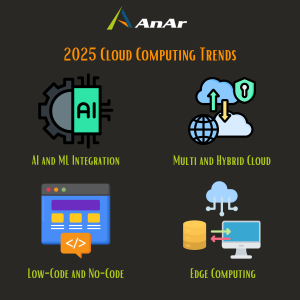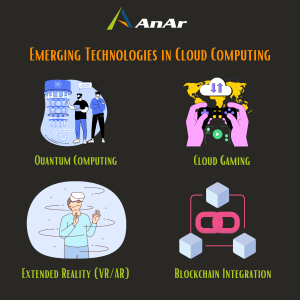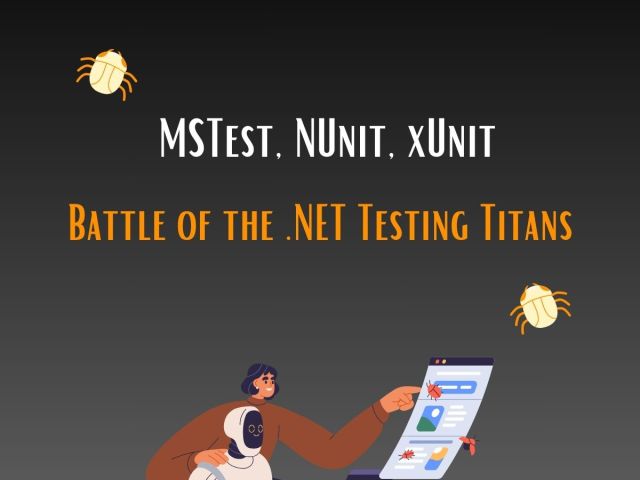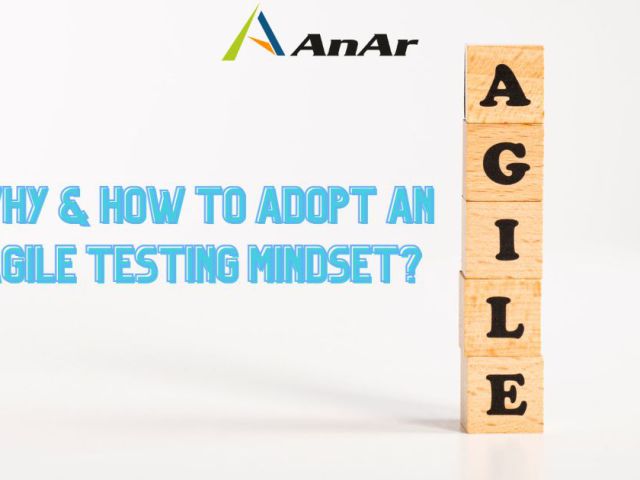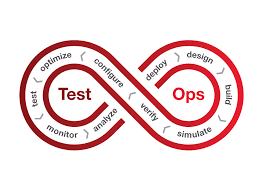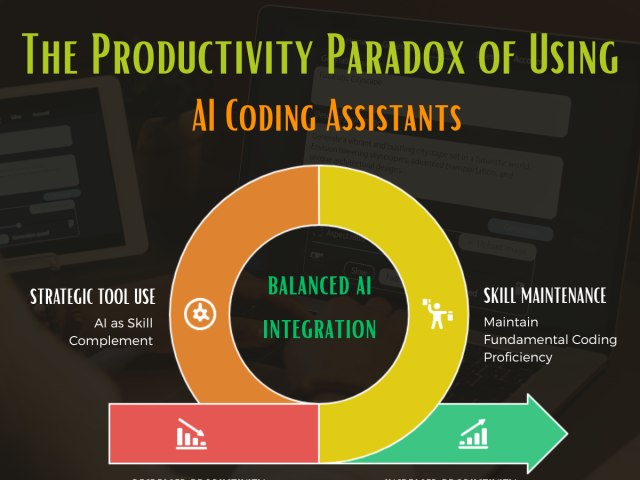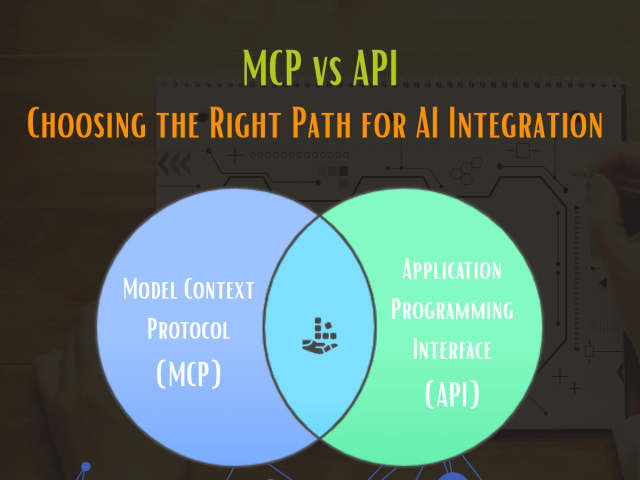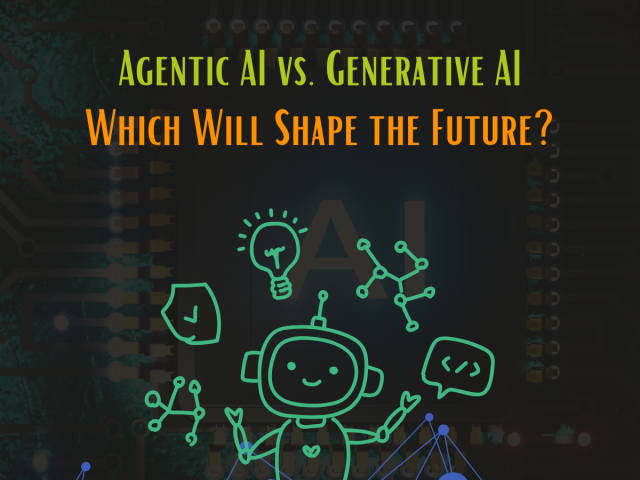Cloud computing has evolved into a cornerstone of the modern tech ecosystem. Organizations of every size and industry rely on clouds for data storage, analytics, software solutions, and more. By 2025, as cutting-edge technologies like IoT, AI, ML, edge computing, and container orchestration gain traction, the cloud will play an even more pivotal role. This blog explores the top trends and innovations poised to shape the future of cloud development in 2025 and beyond.
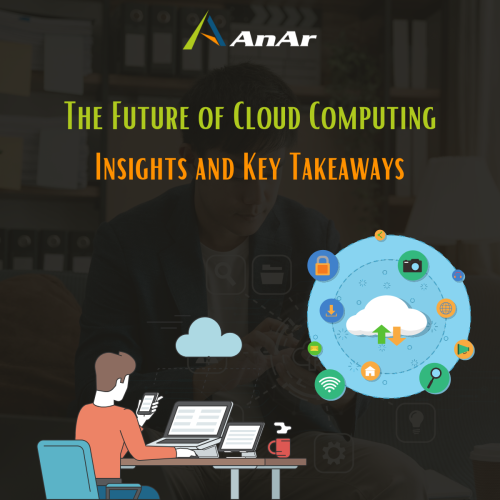
What is Cloud Computing?
At its core, cloud computing refers to the delivery of computing resources—such as servers, storage, databases, and software—over the internet (or “the cloud”), typically on a pay-as-you-go basis. This model grants businesses on-demand access to flexible, scalable resources without needing to own or operate their own physical data centers.
Key benefits of cloud computing include:
- Cost-Effectiveness: Pay only for the resources you use, eliminating the need for large upfront hardware investments.
- Scalability: Easily scale resources up or down based on demand.
- Flexibility: Choose from a wide range of cloud services to fit your unique requirements.
- Reliability: Leading cloud providers invest heavily in infrastructure to ensure minimal downtime.
- Innovation: Developers can focus on building new features rather than maintaining on-premises infrastructure.
Top 10 Trends in Cloud Computing for 2025
1. AI and ML Integration
AI (Artificial Intelligence) and ML (Machine Learning) have become integral to cloud computing. These technologies demand high computational power and vast storage for data training and analysis. Leading cloud providers (Amazon, Google, Microsoft, IBM) are investing heavily in AI/ML services—evident from products like AWS DeepLens and Google Lens.
- Key Outcomes: Automated data analysis, self-learning cloud platforms, and robust, AI-driven security solutions.
2. Data Security Enhancements
No organization wants to compromise on data security. As cyber threats become more sophisticated, so do countermeasures provided by cloud platforms. Encryption protocols, regular security audits, thorough testing, and strong authentication measures minimize data breaches.
- Key Outcomes: Tighter encryption standards, more rigorous compliance enforcement, and advanced threat detection systems.
3. Multi-Cloud and Hybrid Cloud Adoption
Organizations are choosing multiple cloud providers to avoid vendor lock-in and optimize cost. Hybrid setups—combining private and public clouds—offer flexibility for data storage and processing. Multi-cloud strategies also lower the chance of disruptions and make full use of unique features from each provider.
- Key Outcomes: Better resilience, customized resource allocation, and freedom to integrate best-in-class services.
4. Low-Code and No-Code Cloud Solutions
Democratizing software development is a game-changer. Low-code/no-code platforms let teams build apps, websites, and AI-based solutions without deep coding skills or large infrastructure budgets. Tools like Figma and Zoho empower people of varying technical backgrounds to develop solutions quickly.
- Key Outcomes: Faster project turnaround times, cost savings, and broader innovation across teams.
5. Edge Computing
Edge computing brings data processing, storage, and analysis closer to the source—whether it’s an IoT sensor or a user’s device. This dramatically reduces latency, boosts efficiency, and heightens security. With the rise of 5G, edge computing is increasingly critical for real-time applications and IoT solutions.
- Key Outcomes: Real-time analytics, quicker response rates, and improved bandwidth usage.
6. IoT Proliferation
The Internet of Things (IoT) continues to thrive, relying heavily on cloud platforms to store and analyze massive streams of data from smart devices. As IoT sensors generate vast amounts of data, cloud infrastructures facilitate seamless communication, remote device management, and advanced analytics.
- Key Outcomes: Enhanced operational insights, improved automation, and data-driven decision-making in fields like healthcare, manufacturing, and smart cities.
7. Containerization (Kubernetes and Docker)
Technologies like Kubernetes (container orchestration) and Docker (containerization) streamline application deployment and scaling. They allow developers to bundle applications into self-contained “containers” that can run anywhere, offering consistency and portability.
- Key Outcomes: Automated deployment pipelines, simplified scaling, and more efficient resource usage.
8. Serverless Computing
With serverless solutions, developers focus on writing code without worrying about underlying servers or infrastructure. Cloud providers handle provisioning, maintenance, and scaling, charging only when the code runs. This approach lowers operational overhead and boosts scalability.
- Key Outcomes: Reduced infrastructure costs, dynamic resource allocation, and improved development agility.
9. DevSecOps (Integration of Security)
The DevOps philosophy is expanding to include security from the ground up—DevSecOps. This approach bakes security practices into every phase of development. Cloud providers offer specialized DevSecOps tools, ensuring that code deployments follow robust security standards by default.
- Key Outcomes: Proactive threat identification, continuous compliance checks, and minimized vulnerabilities.
10. Disaster Recovery and Backup
Data and system recovery strategies are crucial for business continuity. By leveraging cloud backups and distributed architectures, organizations can quickly recover from disruptions like cyberattacks, natural disasters, or system failures.
- Key Outcomes: Faster restores, lower risk of data loss, and reduced downtime costs.
Beyond 2025: Emerging Technologies and Future Predictions
- Quantum Computing: Still in its early stages, quantum computing holds the potential to solve problems beyond the scope of classical computers, heralding breakthroughs in cryptography, drug discovery, and complex simulations.
- Cloud Gaming and Extended Reality (VR/AR): The cloud enables gaming platforms and VR/AR experiences to process high-quality graphics and interactions in real time, removing the need for expensive local hardware.
- Blockchain Integration: Decentralized applications and data management may leverage cloud services for scalable storage, potentially transforming industries like finance, healthcare, and supply chain.
Looking ahead, 5G connectivity will supercharge edge computing, IoT, and cloud-based services. Sustainable cloud operations will gain importance, prompting providers to optimize energy use and reduce carbon footprints.
Advantages of Cloud Computing
- Data Backup & Recovery –One of the most critical benefits of cloud computing lies in its ability to provide robust backup and recovery solutions. Businesses can schedule automated backups to multiple offsite data centers, mitigating the risk of data loss due to natural disasters or hardware failures. These backup processes often include versioning and redundancy, which further increase reliability. In the event of an emergency, organizations can quickly restore critical data and systems, significantly reducing downtime and associated costs.
- Cost-Effectiveness (Pay-per-Use) – Traditional on-premises infrastructures require significant capital expenditures for hardware, facilities, and ongoing maintenance. By contrast, cloud computing uses a pay-as-you-go model, enabling you to pay only for the resources—such as storage, compute power, or bandwidth—you actually consume. This approach helps organizations optimize budgets, reallocate funds to innovation, and adapt swiftly to fluctuating resource requirements. It also lowers the barrier to entry for startups and smaller businesses that seek enterprise-grade infrastructure without hefty upfront costs.
- Enhanced Data Security – Leading cloud providers prioritize security at every layer of their services, employing advanced encryption protocols, routine vulnerability assessments, and strict compliance practices. They invest heavily in state-of-the-art firewalls, intrusion detection systems, and other cybersecurity measures. Additionally, many providers offer tools to help businesses fulfill specific regulatory obligations (e.g., GDPR, HIPAA). With these protections in place, organizations can confidently store sensitive data and maintain secure workflows without having to hire extensive in-house security teams.
- Unlimited Storage without On-Premises Infrastructure – Cloud platforms offer virtually limitless storage capacity, eliminating the need for expensive physical storage devices and data centers on your premises. This on-demand expansion makes it easy to accommodate sudden data spikes, new applications, or the ongoing growth of digital assets. Since you’re not constrained by physical hardware limitations, you can scale storage capacity up or down based on real-time needs, all while significantly cutting costs related to power, cooling, and infrastructure upkeep.
- High Accessibility & Flexibility – Cloud computing lets you and your teams access data, applications, and development environments from anywhere—anytime—via an internet connection. This level of flexibility fosters collaboration across geographically dispersed teams, enabling seamless sharing, version control, and real-time updates. Many cloud services also integrate with popular productivity suites and tools, making it possible to streamline workflows and reduce the complications that come from juggling separate, siloed systems.
- Scalability to Meet Demand – Scalability is a hallmark of cloud computing: resources can be dynamically scaled up or down to handle traffic peaks, new projects, or rapidly changing workloads. Whether you’re launching a global marketing campaign, experiencing seasonal spikes in user traffic, or testing out new application features, the cloud ensures resources are always at the ready. This agility not only improves system performance but also prevents paying for unused capacity, translating directly into better resource utilization and cost savings.
Key Skills to Succeed in the Cloud Era
- Mastering Major Cloud Platforms
Proficiency in AWS, Azure, or GCP—understanding their core services, pricing models, and best practices. - Programming & Scripting
Skills in Python, Java, or JavaScript for automating workflows and building cloud-native applications. - Data Management & Analytics
Ability to handle large-scale data pipelines, analytics, and AI/ML services for data-driven decision-making. - Security & Compliance
Knowledge of encryption standards, privacy regulations (GDPR, HIPAA), and implementing DevSecOps pipelines. - DevOps Principles
Familiarity with CI/CD tools, container orchestration (Kubernetes, Docker), and monitoring solutions. - AI & ML
Understanding of algorithms, frameworks (TensorFlow, PyTorch), and how to integrate them within cloud environments.
Conclusion
By 2025, cloud development will become even more integral to business operations, bridging technology gaps and enabling powerful new innovations. The trends shaping this future—ranging from AI-powered analytics to serverless computing—will guide organizations toward more efficient, secure, and cost-effective solutions.
Whether you’re an industry leader or an aspiring developer, staying informed about these trends, proactively upskilling in cloud technologies, and integrating best practices for security and compliance will be key to thriving in the next wave of cloud evolution. The journey ahead promises to be marked by exciting advancements, universal accessibility, and limitless possibilities for cloud-driven transformation.
Explore the features of MSTest, NUnit, and xUnit: three leading unit testing frameworks that enhance your C# development process.
Organizations across the globe are increasingly turning to legacy modernization to keep pace with rapidly evolving business needs and stay ahead of…
In waterfall project management, software engineers create a feature and then throw it over to the quality assurance team (QA)…
Test and Operations (TestOps) is the emerging trend in testing. It introduced a newer technique of testing. This advanced testing…

